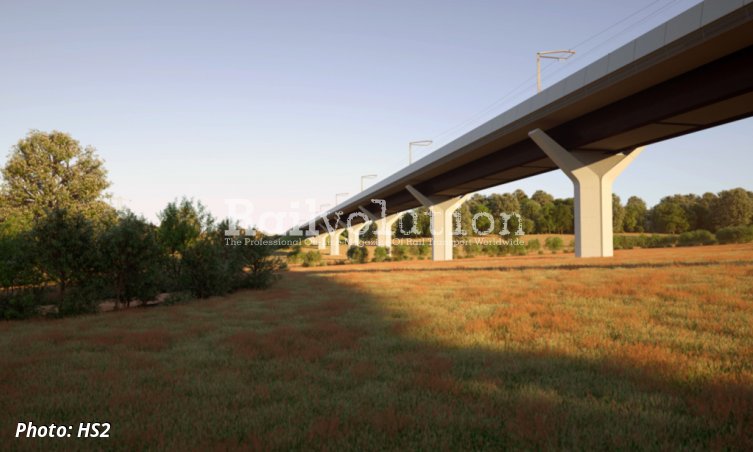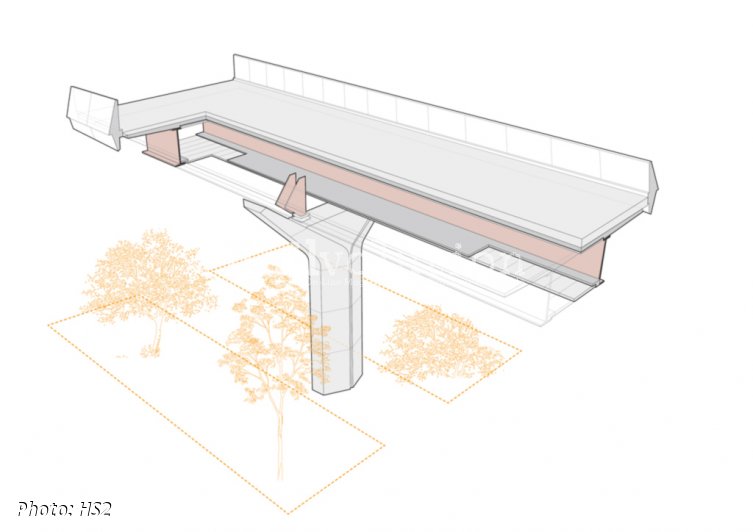HS2 Designers Cut Carbon With Pioneering New Viaduct Design
posted on 20th Jul 2021 16:01
On 16 July 2021, HS2 has revealed that its designers are on track to more than halve the amount of embedded carbon in one of the high speed rail project’s viaducts. The innovative ‘double composite’ approach - which involves two steel girders sandwiched between two layers of reinforced concrete to create a super strong but light weight span - will be used on the Wendover Dean Viaduct in Buckinghamshire.
The 450 m viaduct was recently given approval by Buckinghamshire Council under Schedule 17 of the HS2 Act and it will be the first major railway viaduct in the UK to use the ‘double composite’ approach. Designed by HS2 Ltd’s main works contractor, EKFB - a team made up of Eiffage, Kier, Ferrovial and BAM Nuttall - working with their design partner, ASC (a joint venture between Arcadis Setec and COWI) and specialist architects Moxon, the viaduct is one of 50 being built on the first phase of HS2 between London and the West Midlands.
Applying lessons from the use of double composite structures on the latest French TGV lines, the British team has cut the amount of embedded carbon in the viaduct by 7,433 tonnes - the equivalent of 20,500 return flights from London to Edinburgh. As well as cutting the amount of concrete and steel - one of the major sources of CO2 - the slender design also reduces the silhouette of the structure viewed from across the valley.
Nine evenly spaced piers will support the deck of the viaduct and will be placed to carefully reflect the near symmetry of the ground beneath. In a further improvement to the original design, the piers - some of which will be up to 14 m high - will be cast in pieces offsite before being assembled like giant lego blocks. This approach will reduce the amount of work on site and cut disruption for local residents. The beams themselves will be made from weathering steel, which will age to a characteristically dark russet finish and echo the natural tones of the surrounding landscape.
Total steel weight is around 1,400 tonnes and will be topped with a concrete deck which will carry the track and built-in noise barriers. When viewed from a distance, against the weathered steel, the pale concrete parapet will appear as a thin horizontal band hovering over the slender piers as it glides over the valley and make the whole structure look thinner. This effect will be further emphasised by the viaduct piers, which have been extended to almost connect with the parapet, helping to give the appearance of a light and narrow structure.
The historic field boundaries and hedgerows will be recreated after the viaduct is built to provide uninterrupted access for farmers and local residents. A mix of trees and shrubs commonly found across the Chiltern chalk hills will be used for new woodland planting around the viaduct, including Oak, Beech, Hazel and Wild Cherry.


